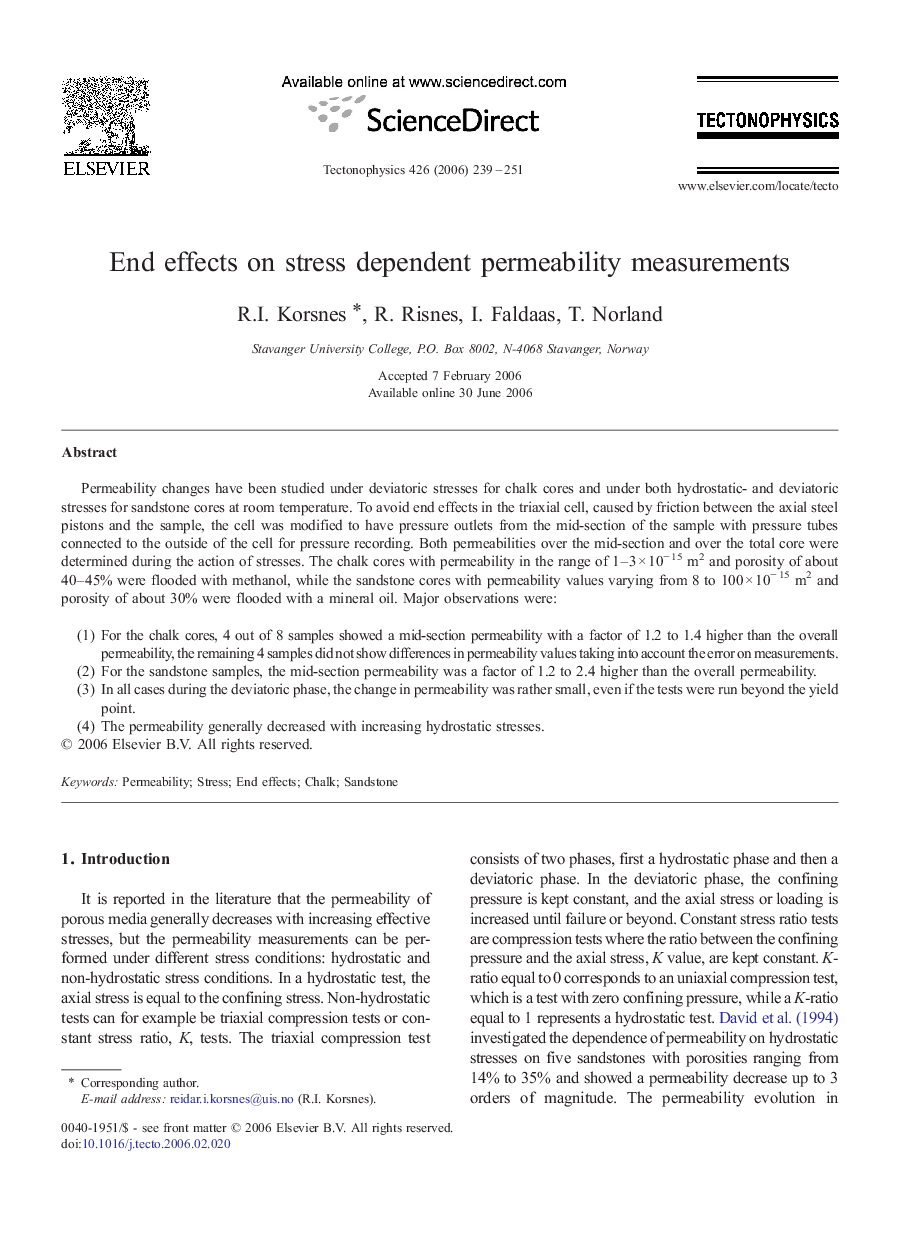| Article ID | Journal | Published Year | Pages | File Type |
|---|---|---|---|---|
| 4695071 | Tectonophysics | 2006 | 13 Pages |
Permeability changes have been studied under deviatoric stresses for chalk cores and under both hydrostatic- and deviatoric stresses for sandstone cores at room temperature. To avoid end effects in the triaxial cell, caused by friction between the axial steel pistons and the sample, the cell was modified to have pressure outlets from the mid-section of the sample with pressure tubes connected to the outside of the cell for pressure recording. Both permeabilities over the mid-section and over the total core were determined during the action of stresses. The chalk cores with permeability in the range of 1–3 × 10− 15 m2 and porosity of about 40–45% were flooded with methanol, while the sandstone cores with permeability values varying from 8 to 100 × 10− 15 m2 and porosity of about 30% were flooded with a mineral oil. Major observations were:(1)For the chalk cores, 4 out of 8 samples showed a mid-section permeability with a factor of 1.2 to 1.4 higher than the overall permeability, the remaining 4 samples did not show differences in permeability values taking into account the error on measurements.(2)For the sandstone samples, the mid-section permeability was a factor of 1.2 to 2.4 higher than the overall permeability.(3)In all cases during the deviatoric phase, the change in permeability was rather small, even if the tests were run beyond the yield point.(4)The permeability generally decreased with increasing hydrostatic stresses.
